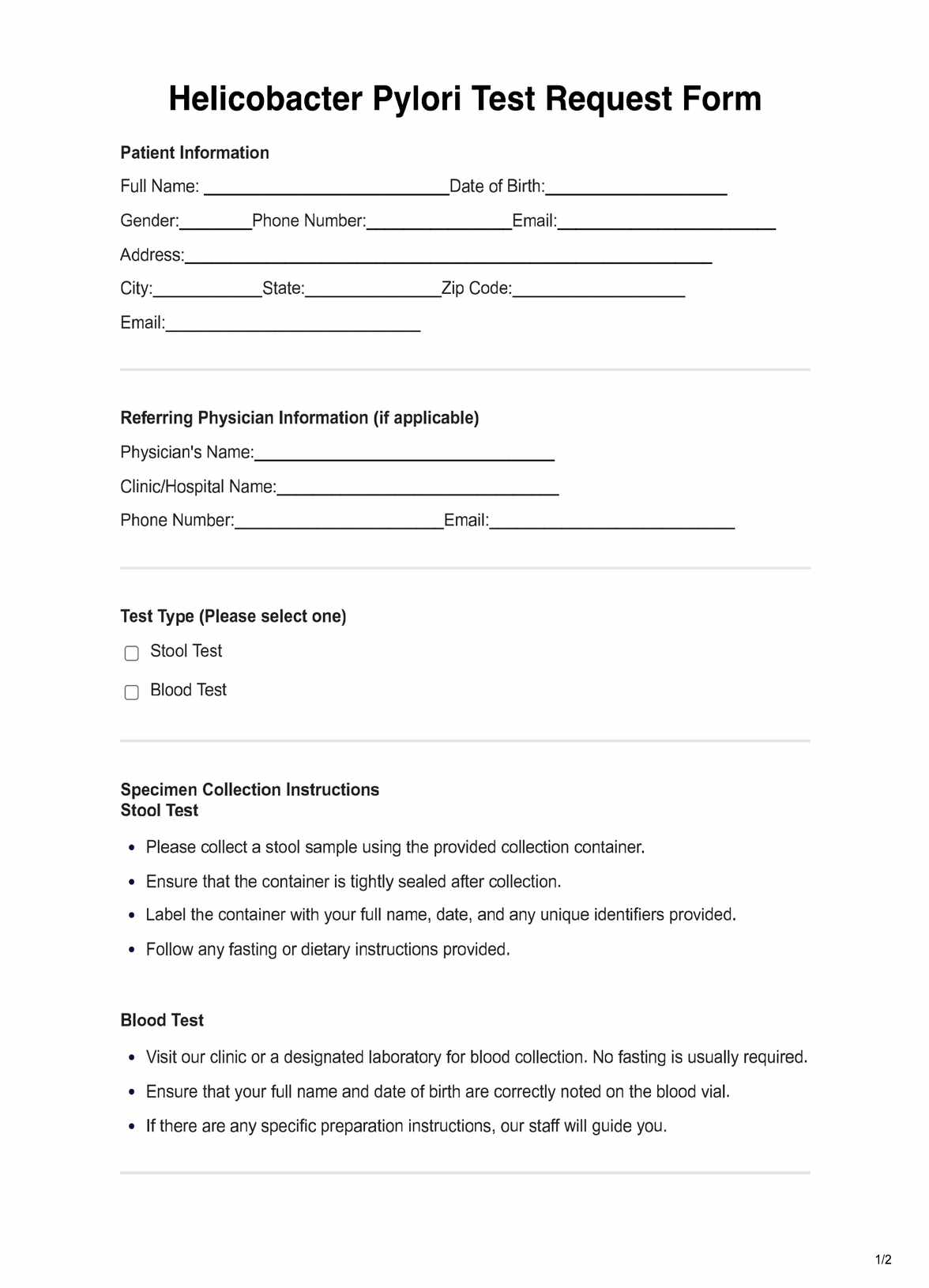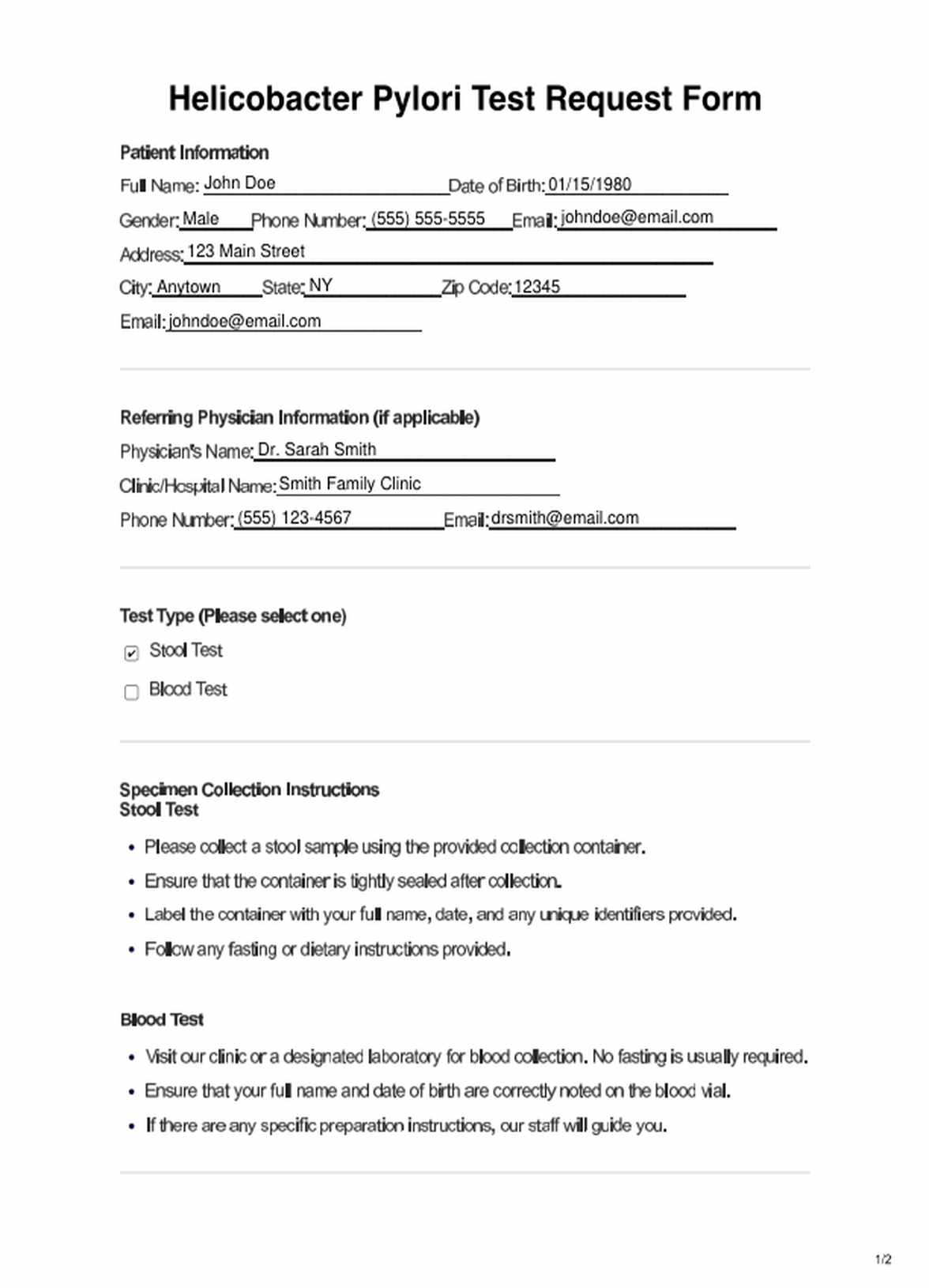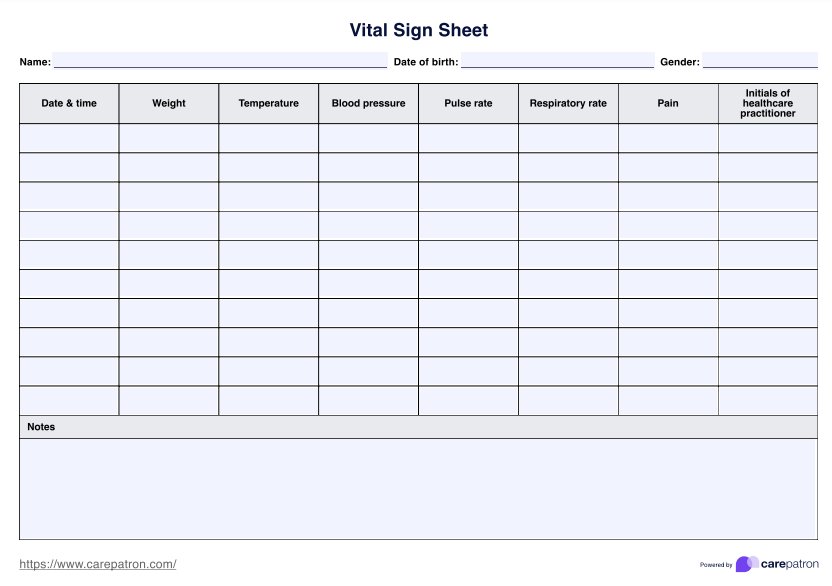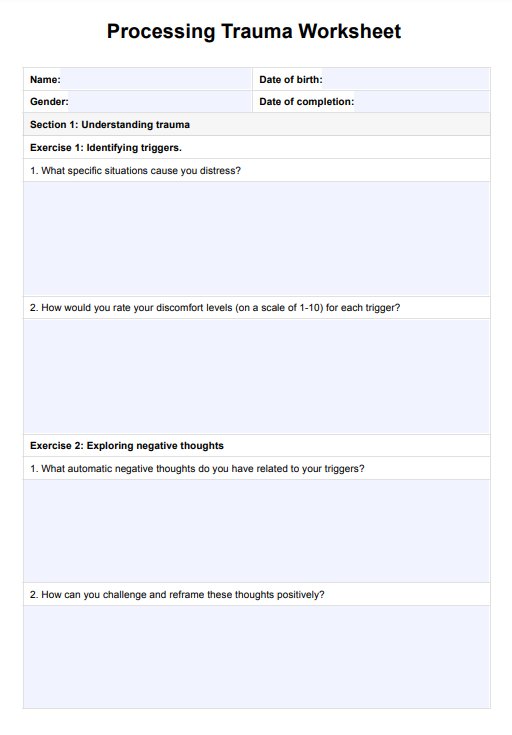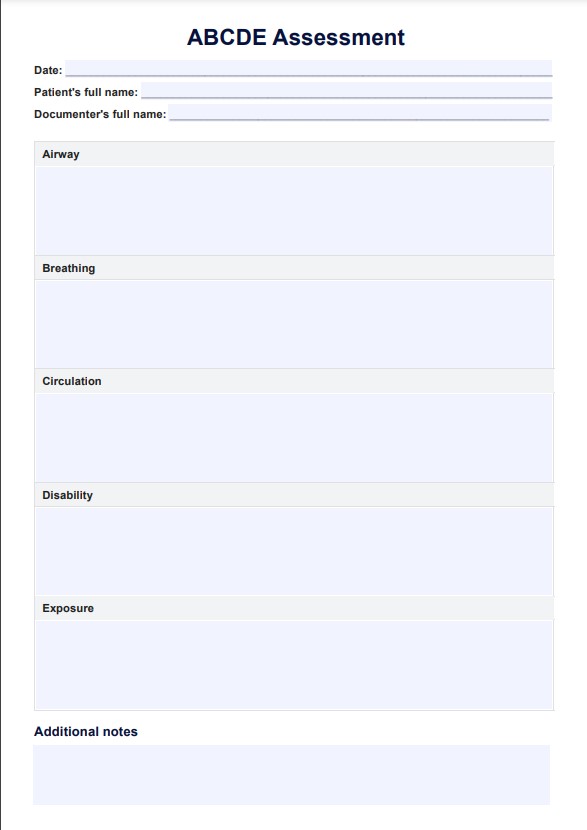Helicobacter Pylori
Streamline Helicobacter Pylori testing with our comprehensive template. Easily collect patient data and enhance clinical efficiency.


What is a Helicobacter Pylori Test?
A Helicobacter Pylori Test is a diagnostic procedure used to detect the presence of Helicobacter pylori (H. pylori) bacteria in the stomach and upper gastrointestinal tract. H. pylori is a spiral-shaped bacterium that colonizes the lining of the stomach and is known to be a major cause of various gastrointestinal conditions, including gastritis (inflammation of the stomach lining), peptic ulcers, and even stomach cancer.
There are several methods for testing for H. pylori, including:
- Breath Test: This is one of the most common methods. A patient consumes a particular substance containing carbon atoms. If H. pylori is present, it will break down the substance, releasing carbon dioxide, which can be detected in the patient's breath.
- Stool Test: This test looks for a stool sample's H. pylori antigens (proteins). It is a non-invasive option and is often used for children or in cases where breath or blood tests may not be suitable.
- Blood Test: A blood sample is taken to check for antibodies produced by the immune system in response to H. pylori infection. This method can show if a person has been exposed to H. pylori at some point, but it may not indicate a current infection.
- Endoscopy: During an upper endoscopy, a thin, flexible tube with a camera is inserted through the mouth and into the stomach. Biopsy samples of the stomach lining can be collected during this procedure and examined for H. pylori bacteria.
The choice of test depends on various factors, including the patient's symptoms, medical history, and the physician's preferences.
Detecting H. pylori is crucial for identifying and managing gastrointestinal disorders. Left untreated, it can lead to severe complications like ulcers and stomach cancer. Positive test results may require antibiotics and acid-reducing medications.
Helicobacter Pylori Template
Helicobacter Pylori Example
How Does it Work?
Step 1: Obtain the Form
Find a printable Helicobacter pylori test form from a reputable healthcare provider or reliable online source, including from Carepatron.
Step 2: Gather Necessary Supplies
Collect the needed materials, including a stool collection kit or blood test requisition form.
Step 3: Read Instructions
Thoroughly read and understand the instructions on the form, including any fasting requirements or specific guidelines for the type of test you're taking (stool or blood).
Step 4: Patient Information
Fill in your personal information on the form, including your full name, date of birth, contact information, and any other requested details.
Step 5: Healthcare Provider Information
If applicable, provide your healthcare provider's information, including their name, clinic or hospital name, and contact details.
Step 6: Specimen Collection
Follow the instructions for collecting the specimen:
- For a stool test, carefully collect a stool sample in the provided container, ensuring it meets the specified requirements.
- For a blood test, you'll typically need to visit a healthcare facility or laboratory where a trained phlebotomist will draw your blood.
Step 7: Packaging and Labeling
Properly label the specimen container or blood vials as instructed on the form. This may include adding your name, date, and any unique identifiers.
Step 8: Submission
Depending on the type of test, you may need to either return the stool sample to a designated collection site or hand the blood vials to the healthcare provider. Follow the instructions regarding submission carefully.
Step 9: Wait for the Results
After submitting the specimen, you'll need to wait for the laboratory to process and analyze it. The time frame for receiving results varies depending on the test and the laboratory's processing times.
Step 10: Interpret Results
Once you receive your results, consult your healthcare provider to interpret them and discuss any necessary follow-up actions, such as treatment if H. pylori is detected.
When would you use this test?
The Helicobacter Pylori Test, represented by the provided template, is used in specific clinical situations when healthcare practitioners suspect or need to confirm the presence of Helicobacter pylori infection in patients. Here are the key scenarios when it's appropriate to use this test:
- Gastrointestinal Symptoms: When patients present with gastrointestinal symptoms such as persistent abdominal pain, bloating, nausea, vomiting, and unexplained weight loss, healthcare practitioners should consider the Helicobacter Pylori Test. These symptoms can indicate H. pylori-related conditions like gastritis and peptic ulcers.
- Suspected Peptic Ulcers: If a patient is suspected of having peptic ulcers characterized by burning stomach pain, discomfort, or a history of recurrent ulcers, this test is essential. Identifying H. pylori infection as the underlying cause guides treatment decisions, as eradicating the bacteria is crucial for ulcer healing.
- Stomach Cancer Risk: Patients with risk factors for stomach cancer, such as a family history or other known risk factors, may require periodic Helicobacter Pylori Tests. Persistent H. pylori infection is a known risk factor for stomach cancer, making early detection and monitoring crucial.
- Follow-up After Treatment: After H. pylori treatment, this test is employed to confirm the success of the eradication therapy. It ensures the bacteria have been effectively eliminated, reducing the risk of recurrent infections and related complications.
- Pediatric Assessment: In pediatric cases, especially when children experience chronic abdominal discomfort or symptoms that could be related to H. pylori infection, the stool variant of this test is commonly used. It's preferred due to its non-invasive nature in assessing young patients.
What do the results mean?
Interpreting the results of a Helicobacter Pylori Test is essential for healthcare professionals to make informed decisions regarding patient care. Here are common results and what they typically mean:
Positive Result
- A positive result indicates the presence of Helicobacter pylori bacteria in the specimen, whether stool or blood samples. It suggests that the patient is currently infected with H. pylori.
- A positive result confirms the need for treatment to eradicate the infection for patients with gastrointestinal symptoms or those at risk for complications like ulcers or stomach cancer.
Negative Result
- A negative result suggests the absence of detectable H. pylori in the specimen. It doesn't necessarily mean the patient has never had an H. pylori infection, as the bacteria may have been previously eradicated or present in levels too low to be detected.
- Negative results can be expected in patients who have completed a successful H. pylori eradication treatment course.
Indeterminate Result
- Sometimes, test results may fall in the indeterminate range, meaning they are inconclusive or uncertain. This can occur due to various factors, including technical issues with the test or borderline values.
- In such cases, healthcare providers may recommend retesting, using a different test method, or further evaluation to clarify the status of H. pylori infection.
Follow-up Testing
Regardless of the initial result, healthcare practitioners may advise follow-up testing for certain patients, especially those with confirmed H. pylori infections. Follow-up tests help assess the effectiveness of treatment in eradicating the bacteria and reducing the risk of complications.
Research & Evidence
The Helicobacter Pylori Test, used to detect the presence of Helicobacter pylori (H. pylori) bacteria, has a rich history backed by extensive research and evidence supporting its use in clinical practice.
In the early 1980s, two Australian scientists, Barry Marshall and Robin Warren, made a groundbreaking discovery when they identified H. pylori as a previously unknown bacterium in the stomach lining. This discovery challenged the belief that no bacteria could survive in the stomach's acidic environment.
Research conducted in subsequent years established a strong association between H. pylori infection and various gastric disorders, including gastritis (stomach lining inflammation), peptic ulcers, and stomach cancer. It was found that H. pylori plays a significant role in developing these conditions.
As the understanding of H. pylori's role in gastrointestinal diseases grew, researchers developed diagnostic tests to detect the presence of the bacteria. These tests include serology (blood tests), stool antigen tests, breath tests, and endoscopic biopsies.
Clinical trials and studies conducted since the 1990s demonstrated the effectiveness of antibiotic-based treatments for eradicating H. pylori infection. Eradication therapy became the standard of care for managing H. pylori-related disorders.
The recognition of H. pylori's involvement in gastric diseases and the availability of reliable diagnostic tests has revolutionized clinical practice. Physicians now use H. pylori tests to confirm infection, guide treatment decisions, and monitor success.
Research has shown that early detection and treatment of H. pylori infection can prevent complications such as peptic ulcers and reduce the risk of stomach cancer, highlighting the importance of timely diagnosis.
References
- Armand, W., MD. (2017). H. pylori, a true stomach “bug”: Who should doctors test and treat? Harvard Health. https://www.health.harvard.edu/blog/h-pylori-a-true-stomach-bug-who-should-doctors-test-and-treat-2017040511328
- Baumann, A. J., DO. (n.d.). Helicobacter pylori antigen test: reference range, interpretation, collection, and panels. https://emedicine.medscape.com/article/2117821-overview?form=fpf
- Elwyn, G. (2007, May 5). Which test is best for Helicobacter pylori? A cost-effectiveness model using decision analysis. PubMed Central (PMC). https://www.ncbi.nlm.nih.gov/pmc/articles/PMC2047016/
- Kazemi, S. (2011, September 1). Diagnostic values of Helicobacter pylori: stool antigen test, urea breath test, rapid urease test, serology, and histology. PubMed Central (PMC). https://www.ncbi.nlm.nih.gov/pmc/articles/PMC3430034/
- myDr. (2021). Helicobacter pylori test: simple test for stomach germ. MyDr.com.au. https://mydr.com.au/tests-investigations/helicobacter-pylori-test-simple-test-for-stomach-germ/
- UpToDate. (n.d.). UpToDate. https://www.uptodate.com/contents/helicobacter-pylori-infection-and-treatment-beyond-the-basics
Commonly asked questions
Healthcare professionals, including gastroenterologists, primary care physicians, and pediatricians, typically request Helicobacter Pylori Tests for patients with gastrointestinal symptoms, suspected ulcers, or specific risk factors.
Helicobacter Pylori Tests are used when patients exhibit symptoms such as abdominal pain, bloating, or nausea, which may indicate H. pylori infection. They are also employed for monitoring, treatment follow-up, and assessing stomach cancer risk.
Helicobacter Pylori Tests involve collecting either a stool sample or a blood sample, depending on the type of test chosen. The collected specimen is then analyzed to detect the presence or absence of H. pylori bacteria.


